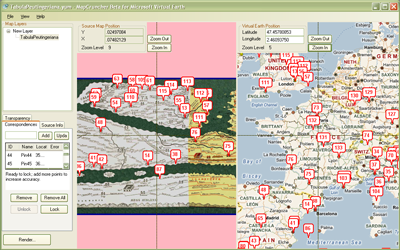Peutinger's Map
"Peutinger's" map, about which geo blogs are buzzing today, also happens to be the subject of work at the Ancient World Mapping Center. Pleiades and the Barrington Atlas cite Miller's 1916 study, the Itineraria Romana.
Comments
Re: Peutinger's Map
Author: Dave Smith
Thanks so much for the article - I particularly picked up on this part:Despite the general familiarity of the image, however, few people have troubled to ‘read’ it, and even those few have typically limited their attention in a very localized way to the aspect which dominates the one full study ever made — namely, the extent to which the routes and distances shown are an accurate reflection of attested conditions on the ground. Moreover this study, entitled Itineraria Romana and published as long ago as 1916 by the amateur scholar Konrad Miller, is now hopelessly outdated; but still no-one has yet dared to address the map from any other perspective. Most recently (since the late 1980s), the broad debate concerning Roman ‘map consciousness’, or the lack of it, has acted as an additional deterrent to novel lines of enquiry.I guess I can count myself among the few who have actually read it, I've worked out a number of the Latin inscriptions, have tied many (close to 200 so far) of the routes and placemarks to modern day, and have sorted out some of the many quirks of the map. I'm indeed working to understand it on a deeper level toward understanding the Roman understanding of their geography. I would imagine that accessibility of the map by scholars was likely an issue in years past...

